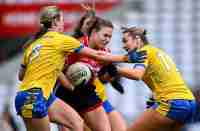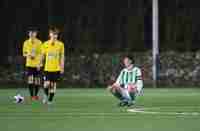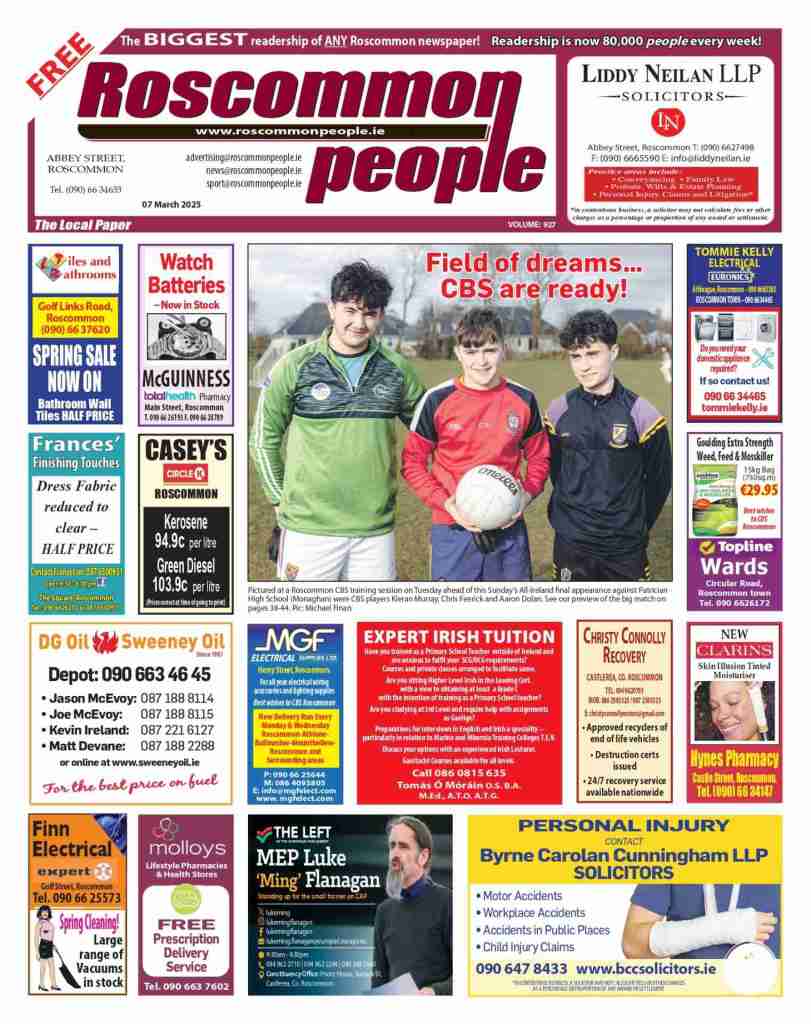When Meath referee David Gough (pictured) dished out a straight red card to Cavan’s Tomas Corr after the teams emerged after half-time last Saturday, the move was almost unprecedented.
There’s no doubt that the referee had
rightfully dismissed a player whom Cavan tried to take off at the interval, but there was a sense of mystery about the whole thing.
Why hadn’t the referee taken action in the seconds after Corr struck out at Ultan Harney just before half-time? Play did continue after all.
Clearly if Gough had seen the incident and considered it worthy of a red card, he would have acted there and then.
Assuming he didn’t see it, how was it brought to his attention?
There has been speculation (including from the Cavan camp) that the referee could perhaps have seen television punditry in his quarters during the half-time break.
Clearly they were worried in the Cavan camp, because they tried to substitute Corr at half-time, although they have explained this by citing an injury.
Events really turned bizarre when Corr came out for the second half and sat on the subs bench (having been subbed, as far as his management were concerned).
However before play resumed referee Gough duly summoned Corr back on to the field of play – and immediately sent him off for the earlier altercation with Harney. (Corr had to return to the pitch to ‘receive’ the red card; that’s the rules!).
It was certainly a bizarre episode. Many in the crowd, and indeed watching it at home, were mystified as to what had unfolded.
Did officials retrospectively fill Gough in on the striking before the half-time whistle? If that’s what happened, it would be an extremely unusual sequence of events, as the moment had passed (i.e. the play had continued up to the half-time break).
Or did, as some have suggested, the referee happen to see clear evidence of the striking on a television during the RTE half-time coverage?
Such is the nature of these things, there’s no way of us definitively clarifying the position.
What we do understand is that referees aren’t permitted access to TV footage in order to take retrospective action. (We are not suggesting that’s what happened in this instance).
Whatever promted Gough’s decision, it was the correct call.
But what would be so bad about encouraging referees to watch TV coverage there and then? Of course
I’m not for one moment advocating the use of TV footage at every GAA ground in the country, as it would not be feasible, but certainly at televised games there is no reason why officials shouldn’t be able to use whatever means are possible in order to help get the decision right.
There were many controversial decisions over the weekend which had a major bearing on GAA ties, e.g. the dubious penalty award to Kerry against Cork and a ‘goal’ which appeared to go wide in the Limerick and Westmeath hurling game – decisions which shaped the complexion and perhaps outcome of proceedings.
Whatever led to his retrospective action, Gough got the decision correct in Cavan and the home team were rightfully reduced to 14 men and Roscommon won the game – case closed. Despite the controversial nature of the dismissal, it showed a level of assertiveness on the part of an official clearly totally focused on making the right call.
It was a decision which went a long way to determining the outcome of the game, but at least unlike so many other occasions in the past where teams were aggrieved, this time it was the right one.






